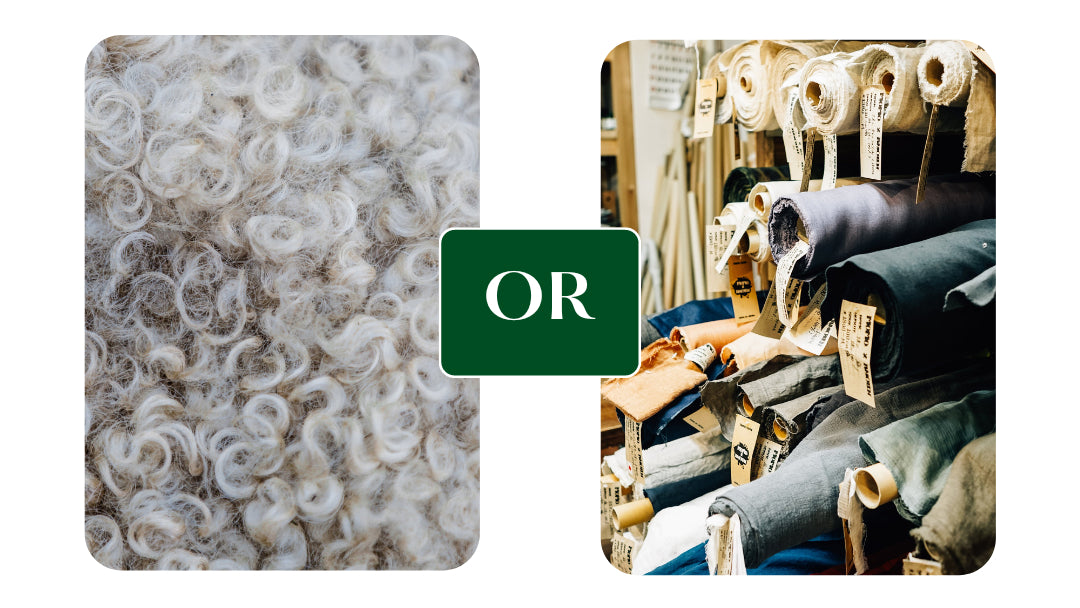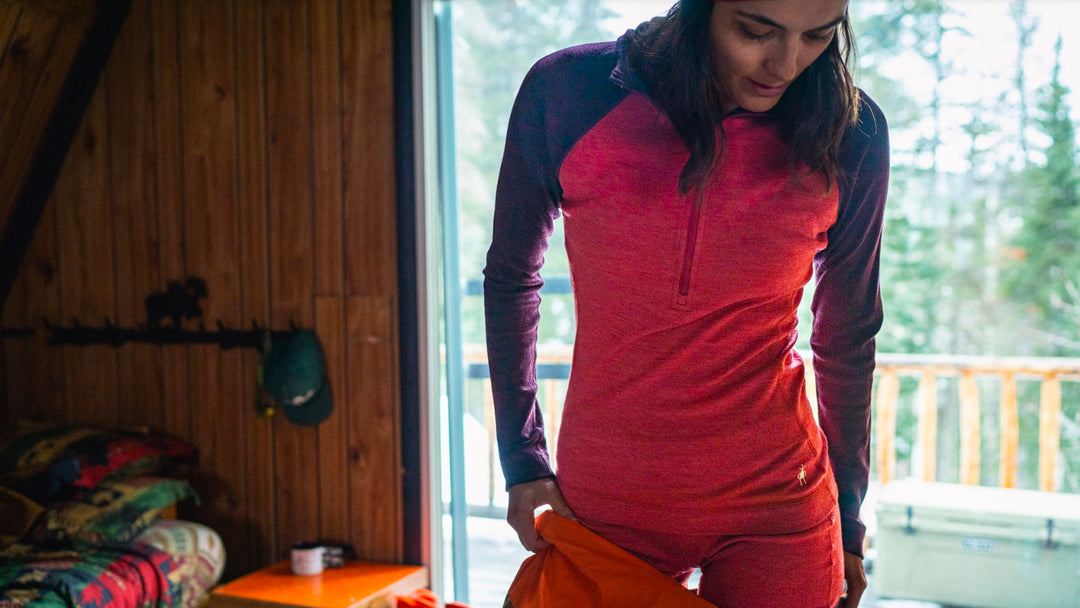
When it comes to gearing up for outdoor adventures, choosing the right base layer is crucial. Whether you're taking on mountain peaks, skiing through snow-covered slopes, or just hanging out at the ice rink, it all begins with having the right base layer for that ultimate comfort. It forms the foundation of your clothing system, regulating your body temperature and keeping you comfortable throughout your activities. While both Merino wool and synthetic fabrics offer commendable performance, their differences cater to distinct preferences. Merino wool excels in natural comfort and odor resistance, ideal for those who prioritize luxury and an organic feel. On the other hand, synthetic fabrics shine in high-intensity activities, quick drying, and durability, appealing to the pragmatists seeking advanced technology.
Let’s delve deeper into the age-old debate: Merino vs. Synthetic fabrics by exploring the unique properties of each to help you make an informed decision for your next outdoor adventure.
Understanding Merino Wool
Natural Insulation
Merino wool is renowned for its exceptional natural insulation properties. Its fine, crimped fibers trap air effectively, providing superior warmth in cold conditions.
Moisture-Wicking Abilities
One of Merino's standout features is its ability to wick moisture away from the skin. Unlike cotton, which retains moisture and can leave you feeling damp and chilled, Merino keeps you dry and comfortable.
Odor Resistance
Merino wool has a natural resistance to odors, making it an excellent choice for multi-day adventures. You can wear it for extended periods without worrying about unpleasant smells.
Softness & Comfort
The fine fibers of Merino wool make it incredibly soft against the skin. It feels luxurious and minimizes any itching or irritation, even for those with sensitive skin.
As a base layer, Merino wool seamlessly combines comfort, functionality, and versatility, making it the ideal companion for a wide range of outdoor activities. Sourced from Merino sheep, its fibers are remarkably fine and soft, ensuring a luxurious feel against the skin without the itchiness often associated with traditional wool. What sets Merino wool apart is its natural temperature-regulating ability, efficiently wicking moisture away from the body to keep the wearer comfortably dry in various climates. Beyond its insulating properties, Merino wool exhibits natural antibacterial characteristics, resisting the buildup of odors and allowing for extended wear without compromising freshness.
Advantages of Synthetic Fabrics
Quick Drying
Synthetic fabrics, often made from materials like polyester or nylon, excel in quick-drying capabilities. They efficiently wick away moisture, making them ideal for high-intensity activities or in wet conditions.
Durability and Abrasion Resistance
Synthetic fabrics are known for their durability and resistance to abrasion. They can withstand rough terrains and frequent use without showing signs of wear and tear.
Versatility
Synthetic base layers come in a wide range of weights and thicknesses, catering to various climates and activities. Whether you're facing extreme cold or moderate temperatures, there's a synthetic option to suit your needs.
Affordability
Compared to Merino wool, synthetic base layers are often more budget-friendly. This makes them an attractive option for outdoor enthusiasts looking for high-performance gear without breaking the bank.
The versatility, durability, and efficient moisture management of synthetic fabrics collectively contribute to an enhanced outdoor experience, making them an excellent choice for base layers tailored to the demands of active lifestyles. Synthetic fabrics offer a multitude of advantages, making them a compelling choice for outdoor enthusiasts. Advanced technology engineering, quick-drying properties and renowned durability all contribute to its power of withstanding the rigors of outdoor adventures while retaining their performance over time. Additionally, these fabrics often come at a more affordable price point, providing a practical and cost-effective solution without compromising on functionality.
Making the choice
Both Merino and synthetic fabrics offer distinct advantages, so the choice ultimately depends on your specific needs and preferences. For cold-weather activities, Merino's natural insulation and moisture-wicking abilities make it a top contender. However, if you prioritize quick-drying and durability, synthetic fabrics have the edge.
In the base layer battle of Merino vs. synthetic fabrics, there is no one-size-fits-all answer. Each has its strengths, and understanding them will help you make an informed decision. Always take time to consider the climate, activity, and personal preferences when choosing the base layer that's right for you.
FAQs
Yes, Merino wool's breathable nature allows it to regulate temperature effectively, making it suitable for a wide range of climates.
Some synthetic fabrics are made from recycled materials, but they generally have a higher environmental impact compared to natural fibers like Merino wool.
Merino wool requires gentle care. Hand wash in cool water or use a delicate cycle with mild detergent. Avoid excessive heat when drying.
Allergies to Merino wool are rare, but some individuals with sensitive skin may experience mild irritation. It's always advisable to do a patch test before extended wear.
Absolutely! Layering Merino and synthetic fabrics can provide the best of both worlds, combining the moisture-wicking properties of Merino with the quick-drying capabilities of Synthetics.









